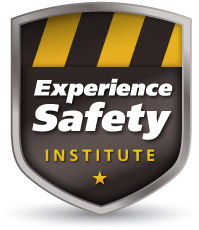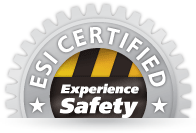Call Toll Free: 855-797-2338

Please complete the form below and an ESI representative will get back to you with a proposal, confirmation of dates requested and answers to any questions you have provided. Thank you.
OSHA General Industry
Control of Hazardous Energy (Lockout/Tagout):
Program covers employer requirements for all elements of a LO/TO program for the purposes of servicing and maintenance of machines and equipment in the workplace. Elements include definitions, training of affected and authorized employees, types of hazardous energies, types of lockout devices and tagout devices and their limitations and recordkeeping. 29 CFR 1910.147, (Subpart J), Power Point (2 hours).
Electrical, Selection and Use of Work Practices:
Program covers information for employers to train employees on safety-related work practices that shall be employed to prevent electric shock or other injuries resulting from direct or indirect electrical contacts, to include overview of control of hazardous energies and permitted proximities to overhead energized lines. 29 CFR 1910.333 – 335, (Subpart S), Power Point (2 hours).
Fire Protection:
Program covers employer requirements for all elements of a fire protection plan to include establishment/training of fire brigades, portable fire extinguishers and training requirements, protection of standpipes, fire detection and extinguishing systems to employee alarm systems. 29 CFR 1910.155 – 165, (Subpart L), Power Point (2 hours).
Hand and Portable Powered Tools and Equipment:
Program covers information for employers to understand that each employer shall be responsible for the safe condition of tools and equipment used by employees, including tools and equipment which may be furnished by employees. Training will include the different types of hand and portable tools and the associated hazards. 29 CFR 1910.240 – 244, (Subpart P), Power Point (2 hours).
Hazard Communication:
Program covers information for employers to train employees on the potential hazards of chemicals and to communicate information concerning those hazards and the appropriate protective measures to employees. Training shall include responsibilities of manufacturers, importers, and employers for hazard classifications, requirements of a written hazard communication program, container labeling, safety data sheet specifics, training and trade secrets. 29 CFR 1910.1200, (Subpart Z), Power Point (2 hours).
Retention of DOT Markings, Placards and Labels:
Included in this program.
29 CFR 1910.1201, (Subpart Z)
Hazardous Waste Operations and Emergency Response:
Program covers employer requirements for mandatory components of a written safety and health program, levels of training, personal protective equipment identification and training, hazard/risk identification, personnel decontamination, drum handling, medical surveillance and record keeping requirements for hazardous waste operations. Training does not include components for emergency response.
29 CFR 1910.120, (Subpart H) (8 Hour Refresher Course).
Materials Handling and Storage, Servicing Multi-piece and Single Piece Rim Wheels (not “LT” designated tires):
Program covers information for employers that provide the servicing of multi-piece and single piece rim wheels to include the required training of their employees and the equipment required to be supplied by the employer. Additional training is provided in the proper methods of material handling, lifting techniques, and proper storage of supplies, equipment and materials. 29 CFR 1910.176, (Subpart N), Power Point (2 hours).
Materials Handling and Storage, Powered Industrial Truck:
Program covers information for employers for safety requirements relating to fire protection, design, maintenance, and use of fork trucks, tractors, platform lift trucks, motorized hand trucks, and other specialized industrial trucks powered by electric motors or internal combustion engines to include employee training. 29 CFR 1910.178, (Subpart N), Power Point, Driver Evaluation (3 hour minimum depending upon class size).
Means of Egress:
Program covers employer requirements for Exit Routes, Emergency Action Plans, and Fire Prevention Plans. Training highlights employer requirements for construction and maintenance of exit routes and creation, maintenance, and training of Emergency Action and Fire Prevention Plans. 29 CFR 1910.33 – 1910.39, (Subpart E), Power Point (1 hour)
Occupational Noise Exposure:
Program covers employer requirements for creation and training of an employer’s Hearing Conservation Program. Training highlights specific requirements an employer is responsible to provide and maintain. 29 CFR 1910.95, (Subpart G), Power Point (1 hour with on-site noise sampling available upon request).
Permit Required Confined Spaces(PRCS):
Program covers employer requirements for all elements of a PRCS program to include definitions, identification of PRCS in the workplace, training of entrants, attendants, entry supervisors, specific requirements to fulfill for entry including emergency services, and record keeping. 29 CFR 1910.146, (Subpart J), Power Point (2 hours, classroom only, does not include field training).
Personal Protective Equipment, General Requirements:
Program covers employer requirements for the elements of these individual segments including the creation of a hazard assessment for the selection of personal protective equipment (Respiratory Protection Program separate): 29 CFR 1910.132, (Subpart I), Power Point (2 hours).
- Eye and Face Protection, 29 CFR 1910.133
- Head Protection, 29 CFR 1910.135
- Foot Protection, 29 CFR 1910.136
- Electrical Protective Devices, 29 CFR 1910.137
- Hand Protection, 29 CFR 1910.138
Personal Protective Equipment, Respiratory Protection:
Program covers employer requirements for all elements of a respiratory protection program including training, air monitoring, qualitative and quantitative fit testing to medical surveillance requirements and record keeping. 29 CFR 1910.134, (Subpart I), Power Point, Video, 4 hours, Qualitative Respirator Fit Testing available.
Safety Color Code for Marking Physical Hazards, Specifications for Accident Prevention Signs and Tags:
Program covers employer requirements for all elements of properly identifying hazards in the workplace with a uniform color scheme. 29 CFR 1910.144 & 1910.145, (Subpart J), Power Point (1 hour)
Sanitation:
Program covers employer requirements for all elements of a sanitation program at the workplace to include housekeeping, waste disposal, and water usage, number of toilet facilities, and wash/shower stations and eating/drinking areas. 29 CFR 1910.141, (Subpart J), Power Point (1 hour)
Toxic and Hazardous Substances:
The following “parts” shall be provided for 29 CFR 1910.1000:
Benzene:
Program covers information for employers to train employees on the chemical properties, specific hazards, symptoms and effects of exposure, exposure monitoring, engineering controls and work practices, respiratory protection, medical surveillance, employee notifications, hazard communication (to include warning signs and labels), and recordkeeping requirements. 29 CFR 1910.1028, (Subpart Z), Power Point (2 hours).
Bloodborne Pathogens:
Program covers information for employers to train employees on what bloodborne pathogens and other potentially infectious materials are, symptoms and effects of exposure, requirements for an exposure control plan, engineering and work practice controls, personal protective equipment, housekeeping, regulated wastes, special practices, containment equipment, Hepatitis B vaccination, hazard communication, training and medical and training recordkeeping, and Sharps injury log maintenance. 29 CFR 1910.1030, (Subpart Z), Power Point (2 hours, BBP kits available separately).
Butadiene:
Program covers information for employers to train employees on the chemical properties, specific hazards, exposure monitoring, symptoms and effects of exposure, engineering controls and work practices, respiratory protection, emergency situations, medical surveillance, employee notifications, hazard communication (to include warning signs and labels), and recordkeeping requirements. 29 CFR 1910.1051, (Subpart Z), Power Point (1 hour).
Walking-Working Surfaces:
Program covers employer requirements for construction, use, and training requirements for stairways, wood and metal portable and fixed ladders, scaffolds, manually propelled ladder stands and scaffolds, and information regarding the fall hazards of platforms and runways in work areas, and floor and wall openings. 29 CFR 1910.21 – 1910.30, (Subpart D), Power Point (1 hour).

Safety Products from ESI
Learn More, Call 855-797-2338
 Sign Up
Sign Up
Receive information on Health & Safety training and other industry updates!
Copyright © 2013 Experience Safety Institute, LLC. All rights reserved.







